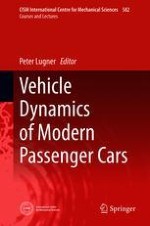
2019 | OriginalPaper | Buchkapitel
Basics of Vehicle Dynamics, Vehicle Models
verfasst von : Peter Lugner, Johannes Edelmann
Erschienen in: Vehicle Dynamics of Modern Passenger Cars
Aktivieren Sie unsere intelligente Suche, um passende Fachinhalte oder Patente zu finden.
Wählen Sie Textabschnitte aus um mit Künstlicher Intelligenz passenden Patente zu finden. powered by
Markieren Sie Textabschnitte, um KI-gestützt weitere passende Inhalte zu finden. powered by